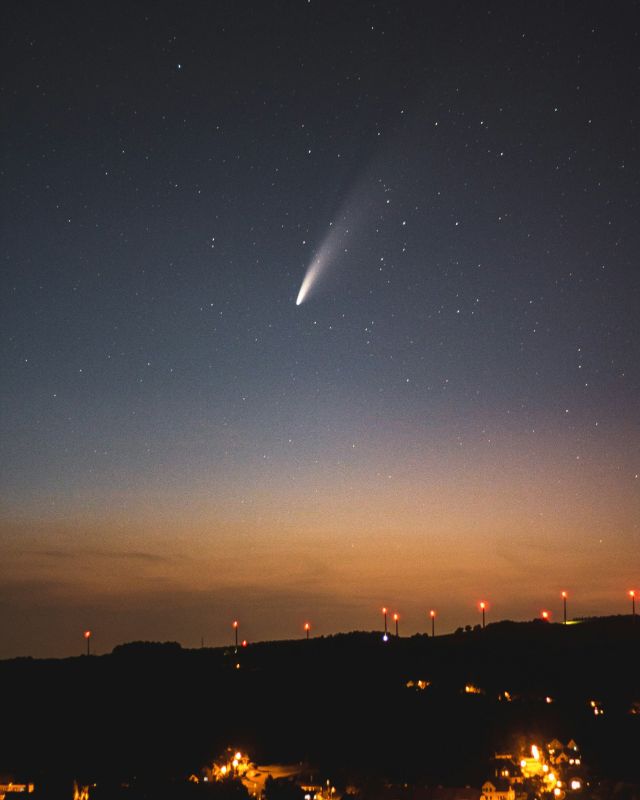A comet that last visited Earth during the Ice Age is now visible in India’s skies. This comet, named C/2023 A3 (Tsuchinshan-ATLAS), was discovered in January 2023. It is a rare celestial event, as the comet was last seen 80,000 years ago. This means the last time it was visible, humans were still living in caves!
The comet reached its closest point to the Sun, called perihelion, on September 28, 2024. Now, it is moving away from the Sun and becoming more visible to us on Earth. This is a fantastic opportunity for sky watchers in India to witness a piece of ancient history.
What is a Comet?
A comet is a small celestial body that orbits the Sun and is made of dust, rock, and ice. When it gets close to the Sun, it heats up and releases gases, forming a glowing head and a tail. This tail always points away from the Sun due to the solar wind. Comets are often called “dirty snowballs” because they are made of ice, dust, and rocky material.
How to See the Comet
To see this comet, you need to wake up early. Just before sunrise is the ideal time to search. Locate a location where you can see the eastern horizon well. This means no tall buildings or city lights blocking your view. The comet will appear as a fuzzy star with a faint tail.
Using binoculars or a small telescope will help you see it better. Early October is predicted to be the comet’s brightest period. Look for it in the eastern sky, low on the horizon. If you are lucky, you might even see it with the naked eye!
Why is This Comet Special?
This comet is special because it has not been seen for 80,000 years. This means it has a very long orbit around the Sun. Most comets we see have shorter orbits and come back more often. But this one is a rare visitor from the distant parts of our solar system.

Scientists believe the comet comes from the Oort Cloud. The Oort Cloud is a distant region of our solar system filled with icy bodies. These bodies are leftovers from the formation of the solar system. When one of these icy bodies gets disturbed, it can fall towards the Sun and become a comet.
The Journey of the Comet
The comet was discovered by astronomers using the ATLAS (Asteroid Terrestrial-impact Last Alert System) telescope in South Africa and the Tsuchinshan Observatory in China. It was named after these observatories. Since its discovery, scientists have been tracking its journey through the solar system.
The comet survived its close encounter with the Sun on September 28, 2024. This was a critical moment because comets can break apart when they get too close to the Sun. But this comet stayed intact and is now visible to us.
Viewing Tips
Here are some tips to help you see the comet:
- Wake up early: The best time to see the comet is just before sunrise.
- Find a dark spot: Go to a place with little light pollution. This means away from city lights.
- Look east: The comet will be in the eastern sky, low on the horizon.
- Use binoculars: While you might see it with the naked eye, binoculars or a small telescope will give you a better view.
- Check the weather: Make sure the sky is clear. Clouds can block your view of the comet.
Fun Facts About Comets
- Comets are made of ice, dust, and rocky material.
- They come from the outer parts of the solar system.
- The tail of a comet always points away from the Sun.
- Comets can have two tails: one made of gas and one made of dust.
- The word “comet” comes from a Greek word meaning “hairy star.”
Editor’s Recommendations
- A Star-Studded Rosette Nebula Lights Up the Night Sky
- Shocking Discovery on Pluto’s Moon Charon: Carbon Dioxide and Hydrogen Peroxide Found
- Annular Solar Eclipse on Oct. 2, Witness the Sky’s Fiery Ring at Breakneck Speed
- Once-in-a-Lifetime Event: Corona Borealis Constellation Shine Brighter as Nova Explosion




